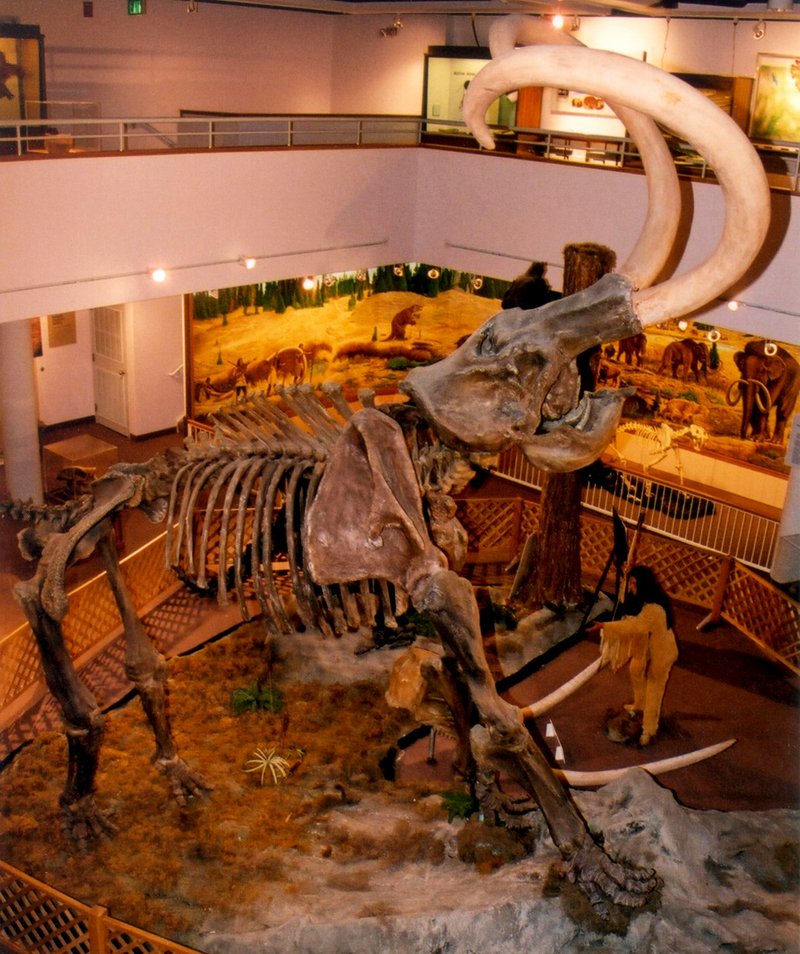Columbian Mammoth (Mammuthus columbi) - Wiki Columbian Mammoth
From Wikipedia, the free encyclopedia
Order: Proboscidea
Family: Elephantidae
Status: Prehistoric
[Photo] Columbian Mammoth (Mammuthus columbi) at College of Eastern Utah Prehistoric Museum. Source: http://library.byways.org/view_details.html?MEDIA_OBJECT_ID=29063 Photo copyright and credit: ??2001 S.W. Clyde. http://www.byways.org
The Columbian Mammoth (Mammuthus columbi), is an extinct species of elephant that inhabited North America between 100,000 and 9,000 years ago. It is believed by some people to be the same species as its slightly larger cousin, M. imperator, because of their similarities in fossil location and size. It was one of the largest of the mammoth species and also one of the largest elephants to have ever lived, measuring 4 metres, or 13 feet, at the shoulder and weighing 10,000kg (9.8 tons). It was a herbivore, with a diet consisting of varied plant life ranging from grasses to conifers. It is also theorized that the Columbian Mammoth ate the giant fruits of North America such as the Osage-orange, Kentucky coffee and Honey locust as there was no other large herbivore in North America then that could ingest these fruits. Using studies of African elephants, it has been estimated that a large male would have eaten approximately 700 pounds, or 318.2 kilograms, of plant material daily. A pair of Columbian Mammoth tusks discovered in central Texas was the largest ever found for any elephant: 5 metres, or 16 feet, long.
The Columbian Mammoth was one of the last members of the American Megafauna to become extinct, with several specimens dating to 9,000 years ago or less and one near Nashville, Tennessee, reliably dated to only about 7,800 years ago.
The remains of Columbian Mammoths were discovered in the La Brea Tar Pits, located in Los Angeles, California, and the skeleton of one of them is on exhibit in that site's museum. This mammoth also lived in Mexico, where its remains are very common. A large individual is the central exhibit in the Regional Museum of Guadalajara, in the Mexican state of Jalisco.
In 1998, the Washington State Legislature approved the Columbian Mammoth as the State Fossil.
http://en.wikipedia.org/wiki/Columbian_Mammoth
| The text in this page is based on the copyrighted Wikipedia article shown in above URL. It is used under the GNU Free Documentation License. You may redistribute it, verbatim or modified, providing that you comply with the terms of the GFDL. |
